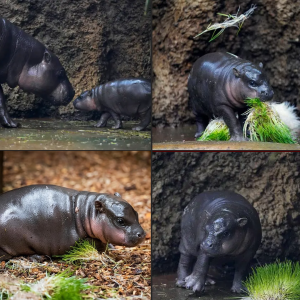The Audubon Photography Awards, hosted by the National Audubon Society, has pulled back the curtain on bird behavior with these scenes and more.
Here are 12 of the artful and moving entries honored by the judges.
Grand Prize Winner: Blackburnian Warbler
/https://tf-cmsv2-smithsonianmag-media.s3.amazonaws.com/filer_public/30/fd/30fd7b16-fd9b-401e-af19-27d80cfed74a/aud_apa-2024_blackburnian-warbler_a1_31756-0_photo-mathew-malwitz.jpg)
The song of a magnolia warbler drew amateur photographer Mathew Malwitz down the trail in Pennsylvania’s Promised Land State Park. But suddenly, his attention was diverted as a pair of birds fell—quite literally—at his feet.
Two male blackburnian warblers with fiery orange throats dropped from the trees as they fought, landing just in front of Malwitz—close enough that he took a step back. For a moment, he wondered if the birds were injured from the impact, but then they continued their dispute.
“Once I realized the pair were too busy to notice me, I slowly dropped to the ground at their level to get a better look into their world,” Malwitz tells Audubon magazine. “I adjusted my settings for action and snapped as they fought.”
Male blackburnian warblers compete for the best nesting territories, which can lead to some physical altercations.
“This photo incorporates so much of what we all hope for in a spectacular image,” contest judge Daniel Dietrich, a wildlife photographer, filmmaker and cinematographer, tells Audubon. “The intense action is captured perfectly as the two animals grasp at each other’s beaks. The symmetry of the wing position and color of the birds are brilliant.”
Professional Award Winner: Willow Ptarmigan
/https://tf-cmsv2-smithsonianmag-media.s3.amazonaws.com/filer_public/b1/86/b1866fe8-8d3a-44a0-8ce2-0767037253ac/aud_apa-2024_willow-ptarmigan_p0_31916-10_photo-liron-gertsman.jpg) Flying willow ptarmigans appear to blend into a snowy backdrop in Kluane National Park in Yukon, Canada. Liron Gertsman / Audubon Photography Awards / 2024 Professional Winner
Flying willow ptarmigans appear to blend into a snowy backdrop in Kluane National Park in Yukon, Canada. Liron Gertsman / Audubon Photography Awards / 2024 Professional Winner
These seven willow ptarmigans in flight blend nearly entirely into the white background—and this isn’t a coincidence. The birds are masters of camouflage, growing snow-white plumage in winter and mottled brown feathers in summer. Well-adapted to their alpine environment, willow ptarmigans have snowshoe-like feathers on their feet that allow them to walk on the powder. They’ll even dig burrows in the snow to shelter from the cold.
Canadian photographer Liron Gertsman captured this group of the birds as they were flying in whiteout conditions.
“This image awakens a feeling of peace and beauty in me,” contest judge Lucas Bustamante, an environmental photojournalist and biologist, says to Audubon. “In addition, the accuracy of framing all the flying ptarmigans in a harmonious composition is impressive—as is the perfect contrast of the white snow and the birds with their black dots.”
Amateur Award Winner: Great-Tailed Grackle
/https://tf-cmsv2-smithsonianmag-media.s3.amazonaws.com/filer_public/b3/5c/b35ca685-a1b8-4c41-9aaf-23e4d1346dda/aud_apa-2024_great-tailed-grackle_a0_28971-1_photo-tristan-vratil.jpg)
On the commute home from work in Austin, Texas, Tristan Vratil often drives beneath a massive skyward congregation of great-tailed grackles. When he’s stopped in traffic, he watches them.
“I lean onto my steering wheel to look up at the birds flying in a chaotic pattern and wonder whether other drivers notice their beauty,” he tells Audubon.
One day, he pulled over at a gas station and set up his camera on a tripod. Against the colorful backdrop of the evening sky, he photographed the group; the stationary birds in crisp focus, sitting on power lines, and the flying ones slightly blurred.
The resulting image “shows us that nature exists not only as an isolated or pristine environment, but also at the intersection of the wild with humans,” contest judge Bustamante says to Audubon.
Youth Award Winner: American Kestrel
/https://tf-cmsv2-smithsonianmag-media.s3.amazonaws.com/filer_public/a7/ee/a7ee7cc3-6419-4c68-8f0f-19138f5151c0/aud_apa-2024_american-kestrel_y0_28731-12_photo-parham-pourahmad.jpg) A female American kestrel stands on a fence post in Calero County Park in San Jose, California, as a male kestrel lands on her back with his wings outstretched. Parham Pourahmad / Audubon Photography Awards / 2024 Youth Winner
A female American kestrel stands on a fence post in Calero County Park in San Jose, California, as a male kestrel lands on her back with his wings outstretched. Parham Pourahmad / Audubon Photography Awards / 2024 Youth Winner
Parham Pourahmad found a pair of American kestrels in San Jose, California. Both were foraging, eating insects and bits of gravel to aid digestion, when they began to mate. Hoping to catch a picture if the birds repeated the behavior, Pourahmad waited in the car with his mom, knowing his movements—if detected—could scare the birds away. Soon, the male returned to mate with the female again.
Contest judge Sabine Meyer, photography director for the National Audubon Society, tells Audubon the image is an “elegant composition that has just the right amount of negative space around the action.”
Usually, the same two kestrels will mate year after year, reuniting each spring to breed despite spending the winters apart. The female often incubates the eggs, while the male usually secures the food. American kestrels are the only kestrels in the Western Hemisphere, and while they’re part of the falcon family, the petite raptors are closer in size to doves.
Female Bird Prize: Wild Turkey
/https://tf-cmsv2-smithsonianmag-media.s3.amazonaws.com/filer_public/d3/a7/d3a7b180-1abd-46c6-ae10-eca40214aaad/aud_apa-2024_wild-turkey_a1_27908-0_photo-travis-potter.jpg)
While driving home, Travis Potter noticed this female wild turkey foraging around an abandoned railroad track. He got out of the car and stepped into the middle of the rails to frame a well-composed picture.
“That’s when she stretched her wings into a ballerina’s pose amid the chain-link fence, asphalt and concrete,” Potter tells Audubon. “The contrast of natural and manufactured was stark.”
Now in its fourth year, the Female Bird Prize aims to put a spotlight on female birds, which are often less colorful than their male counterparts. Sometimes, this leads female birds to be overlooked, meaning they often get left behind in photography, conservation and science. In the case of wild turkeys, males in breeding plumage puff out their feathers—appearing almost round—and fan their tails in a flashy display. Their heads and wattles are blue and red. Female wild turkeys are smaller, with more muted brown plumage.
Fisher Prize: Common Gallinule
/https://tf-cmsv2-smithsonianmag-media.s3.amazonaws.com/filer_public/24/69/24692716-746f-46ae-882b-a60b671f34cd/aud_apa-2024_common-gallinule_p1_29637-3_photo-douglas-defelice.jpg) A common gallinule splashes into the water in Tarpon Springs, Florida, disappearing head-first beneath the surface, leaving only its legs visible. Douglas DeFelice / Audubon Photography Awards / 2024 Fisher Prize Winner
A common gallinule splashes into the water in Tarpon Springs, Florida, disappearing head-first beneath the surface, leaving only its legs visible. Douglas DeFelice / Audubon Photography Awards / 2024 Fisher Prize Winner
As the sun dropped low toward the horizon in Tarpon Springs, Florida, Douglas DeFelice watched two common gallinules—odd birds in the rail family sometimes described as “swamp chickens”—searching for vegetation to eat. One of them was diving, which DeFelice hadn’t seen often, so the photographer snapped an image of the bird as it went underwater—backlit and underexposed to make the droplets appear.
At the center of the splash are the gallinule’s adaptive feet. The species is related to the American Coot, which has curious lobed toes that help it to both swim and walk. Gallinules did not evolve this adaptation and instead have long, thin toes—perfect for striding through marshland.
“So often we are focused on eye contact or tight face shots. I love this image for its creativity, and the risk in submitting it,” says contest judge Dietrich to Audubon. “There is a beauty in the structure of the legs and the splashing water.”
Birds in Landscapes Prize: California Quail
/https://tf-cmsv2-smithsonianmag-media.s3.amazonaws.com/filer_public/c7/26/c7268e14-7711-4138-9794-2f1a54ead853/aud_apa-2024_california-quail_p1_29200-1_photo-kevin-lohman.jpg)
California quail are native to the Golden State and can often be seen scratching at the ground to scrounge for seeds or other food. In fall and winter, they form flocks known as coveys, which can contain various family groups and number more than 75 birds.
Here, one quail stands sentinel, his covey likely hidden among the chaparral vegetation. In the golden light of near-sunset, Kevin Lohman looked to frame the bird with layers in the landscape, letting the animal’s surroundings tell a story that would have been missed in a tight shot.
“He sits as a protector over his covey in this beautifully captured image,” contest judge Dietrich tells Audubon. “The dramatic lighting, the fog and bird position all come together so well here.”
Plants for Birds Award Winner: Black-Capped Chickadee
/https://tf-cmsv2-smithsonianmag-media.s3.amazonaws.com/filer_public/f5/10/f5109819-32c9-4123-b03e-73ad57e0d725/aud_apa-2024_black-capped-chickadee_broad-leaf_cattail_a1_28281-0_photo-linda-j-scher.jpg) A black-capped chickadee alights on a broad-leaf cattail, which bends under its weight as the bird eats seeds in Wood Lake Nature Center in Richfield, Minnesota. Linda Scher / Audubon Photography Awards / 2024 Plants For Birds Winner
A black-capped chickadee alights on a broad-leaf cattail, which bends under its weight as the bird eats seeds in Wood Lake Nature Center in Richfield, Minnesota. Linda Scher / Audubon Photography Awards / 2024 Plants For Birds Winner
Black-capped chickadees are often seen probing through vegetation in search of seeds. Linda Scher followed this one, which was in a group of other chickadees and American goldfinches flitting through broad-leaf cattails in Richfield, Minnesota. She raised her ISO to get a quick shutter speed that captured the fast-moving songbird.
This particular chickadee is just a few weeks old—its loose feathers give that away—but it looks powerful as it grips the reed.
“The photo invites you into an ephemeral moment with the industrious bird bending the cattail to its will with no small effort on its part,” John Rowden, a contest judge and native plants expert, tells Audubon. “The photo even contains a surprise: Zooming in, you can see a tiny caterpillar in the chickadee’s bill.”
Professional Honorable Mention: Forster’s Tern
/https://tf-cmsv2-smithsonianmag-media.s3.amazonaws.com/filer_public/32/f7/32f72147-56d3-4558-ada0-287c2b335a85/aud_apa-2024_forsters-tern_p1_29200-13_photo-kevin-lohman.jpg)
Kevin Lohman found a group of Forster’s terns diving into a lake in Mountain View, California, often emerging from its depths with small fish. He wanted to capture a picture of one as it left the water, but because he was using a long lens that has a very narrow field of view, Lohman had to predict where the birds would surface. When this one burst from the lake, he clicked the shutter.
“This tern popped up near me and did a quick shake, sending droplets in every direction,” Lohman tells Audubon. “When it twisted its head to remove the water, it looked like it was flying upside-down.”
The Forster’s tern might look similar to other medium-sized terns in the U.S., but it stands out among them for a few reasons. For one, it’s the only bird of this group to breed in marshes, and it’s the only one that will stay in the contiguous states during winter. Some will nest on floating vegetation, while others will nest on beaches beside the marsh. Once the young have left the nest, Forster’s terns often migrate to the coasts.
Amateur Honorable Mention: Barred Owl
/https://tf-cmsv2-smithsonianmag-media.s3.amazonaws.com/filer_public/d0/04/d004720f-7490-4aaa-966d-591b1a8dca08/aud_apa-2024_barred-owl_a1_30620-0_photo-erin-boisvert.jpg) A barred owl pauses to look at the camera while hunting a squirrel in Newtown, Connecticut’s Deep Brook Preserve. Erin Boisvert / Audubon Photography Awards / 2024 Amateur Honorable Mention
A barred owl pauses to look at the camera while hunting a squirrel in Newtown, Connecticut’s Deep Brook Preserve. Erin Boisvert / Audubon Photography Awards / 2024 Amateur Honorable Mention
A loud eruption of screeching rang out through the forest in Newtown, Connecticut, as Erin Boisvert was birding. She soon found the source of the noise: two red-tailed hawks and a barred owl fighting over a squirrel. The owl won the dispute, and as the red-tailed hawks flew off and watched from behind the photographer, the victor began its meal.
“I watched in awe as the owl moved with the ease of an Olympic gymnast to keep an eye on the hawks and its dinner,” Boisvert tells Audubon. “I captured this photo as it looked in my direction.”
Youth Honorable Mention: Red-Necked Grebe
/https://tf-cmsv2-smithsonianmag-media.s3.amazonaws.com/filer_public/67/93/6793a266-0b83-4da1-bfc7-5e69af9d90b7/aud_apa-2024_red-necked-grebe-_y1_27694-0_photo-edwin-liu.jpg)
This mated pair of red-necked grebes on Lake Ontario share parenting duties—while one bird carries their babies, the other feeds them fish. One of the hatchlings eagerly reaches for this offered meal as the other looks on.
Edwin Liu had been observing this grebe family for a while before taking this picture. He placed his tripod in the water so that his camera was just at the surface. As a result, he captured the birds’ reflection and snapped the image at their eye level.
“Things happened very quickly,” he tells Audubon. “Luckily, I managed to get the shot I wanted: this image that shows feeding behavior of parents and chicks in their habitat. Hard work brings luck.”
Plants for Birds Honorable Mention: Sedge Wren
/https://tf-cmsv2-smithsonianmag-media.s3.amazonaws.com/filer_public/b4/09/b4090ad1-18de-410d-b855-dd9e799c73da/aud_apa-2024_sedge-wren_gray-head_coneflower_a1_31864-0_photo-trisha-snider.jpg) A sedge wren perches straddling two stems above some gray-head coneflowers in Wallacetown, Ontario, Canada. Trisha Snider / Audubon Photography Awards / 2024 Plants For Birds Honorable Mention
A sedge wren perches straddling two stems above some gray-head coneflowers in Wallacetown, Ontario, Canada. Trisha Snider / Audubon Photography Awards / 2024 Plants For Birds Honorable Mention
Native plants provide shelter and respite for sedge wrens, secretive and shy birds that typically forage out of human sight. But here, Trisha Snider captured a wren grasping onto gray-head coneflowers like stilts, its beak open in song.
In Snider’s community in Ontario, Canada, sedge wrens are not very common, so she went outside in search of this bird when she heard it was around.
“As I stood back to observe his beauty and listen to him sing, I felt honored to have this moment,” she tells Audubon.





